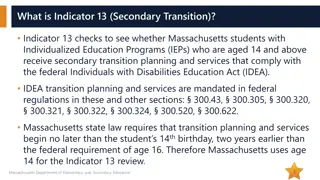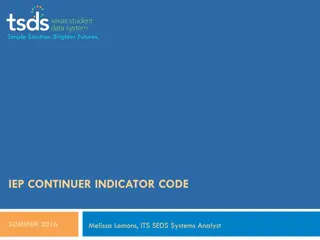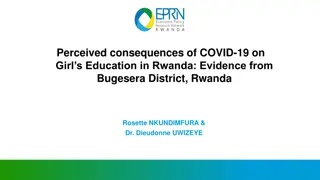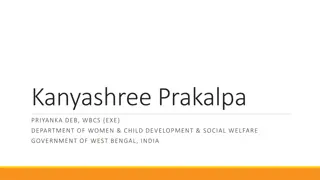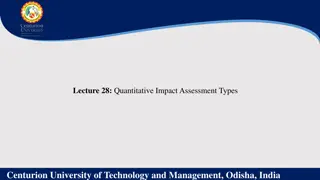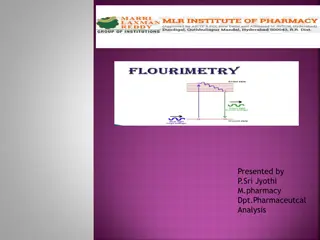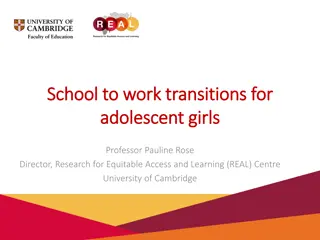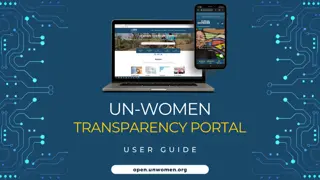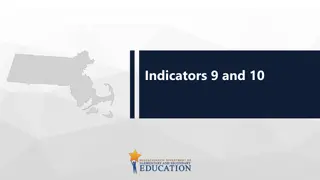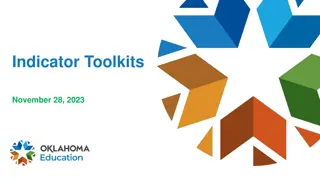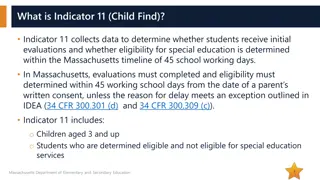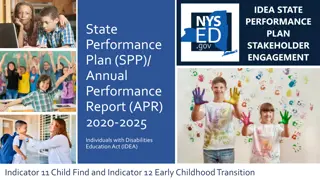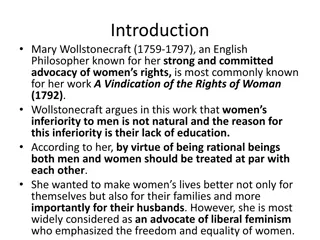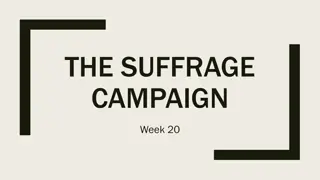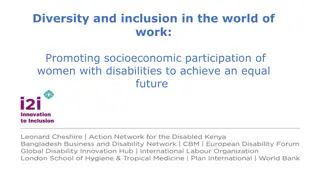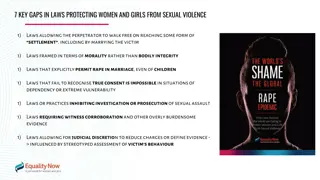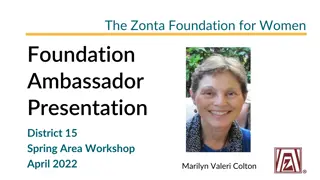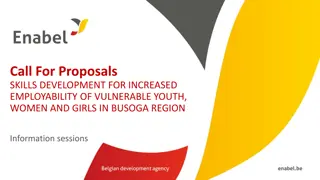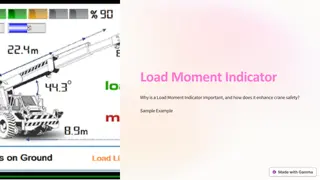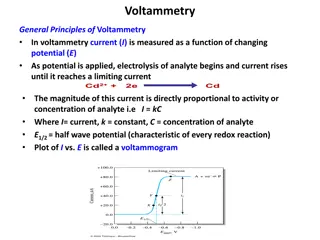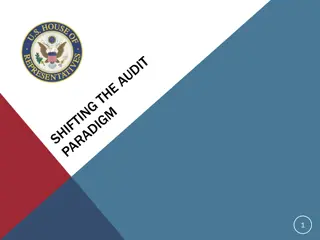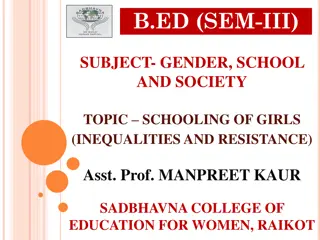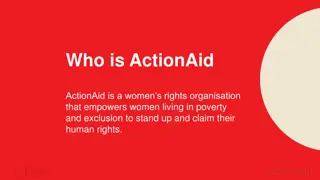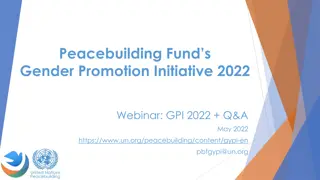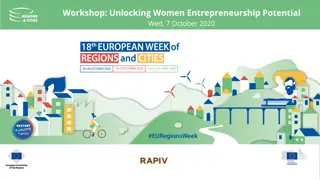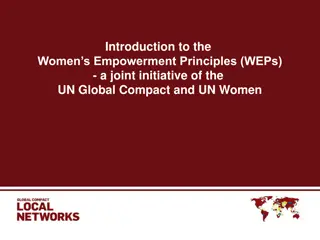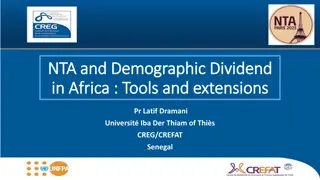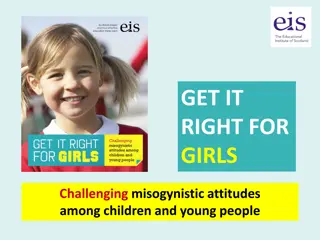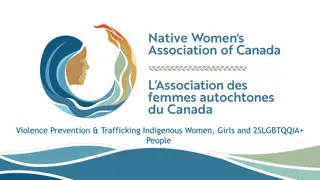Quantifying PEPFAR's Impact on Women & Girls: Analysis of Indicator Data
This analysis delves into PEPFAR's significant role in addressing HIV among women and girls, showcasing an increase in services provided from 2016 to 2019. The data reveals a rise in women and girls served across various indicators, highlighting the program's reach in key program areas. Through the analysis, a better understanding of PEPFAR's impact on women and girls in different countries is provided, underscoring the importance of tailored HIV interventions for this demographic.
Download Presentation

Please find below an Image/Link to download the presentation.
The content on the website is provided AS IS for your information and personal use only. It may not be sold, licensed, or shared on other websites without obtaining consent from the author. Download presentation by click this link. If you encounter any issues during the download, it is possible that the publisher has removed the file from their server.
E N D
Presentation Transcript
Quantifying PEPFARs Role for Women and Girls: Analysis of Monitoring, Evaluation, and Reporting Indicator Data, 2016-2019 Jennifer Kates and Kellie Moss AIDS 2020
Background Women and girls represent more than half of all people living with HIV worldwide, and HIV is the leading cause of death among women aged 15-49. Many factors contribute to women s risk for HIV including gender inequality, gender-based violence, and lack of access to education and other social protection programs. The U.S. President s Emergency Plan for AIDS Relief (PEPFAR) plays an important role in addressing HIV among women and girls. PEPFAR estimates that it spent nearly $2 billion on such efforts last year, including through its DREAMS program. However, to date, program data have not been fully analyzed in this area. This analysis sought to quantify PEPFAR s role for women and girls in key program areas, analyzing data over time as well as by country, to better understand the extent of its reach.
Methods Analysis of PEPFAR s Monitoring, Evaluation, and Reporting Indicator (MERS) data, available from the public PEPFAR dashboard (https://data.pepfar.gov/) was conducted to identify the number of recipients by year (2016 and 2019) for four indicators: receiving HIV testing and counseling services; newly testing HIV positive; currently on antiretroviral therapy; and newly enrolled on antiretroviral therapy. Data were analyzed by sex (those with unknown sex were excluded). Only data from the 25 countries required to submit country operational plans in FY 2019 (which account for the bulk of PEPFAR resources and clients served) were included.
Results The overall number of women and girls served in these 25 PEPFAR countries increased across all indicators, and women and girls represent the majority of those reached by PEPFAR. For example, the number of women and girls receiving HIV testing and counseling services rose from 10.5 million in 2016 to 12.2 million in 2019 (see Figure 1), and their share of all those receiving such services increased (62% to 65%) (see Figure 2). The number of women and girls on antiretroviral therapy also rose, from 7 million in 2016 to 9.7 million in 2019, though their share of the total was similar in each period (66% and 67%). While the number of women and girls newly testing positive and newly enrolled on antiretroviral therapy increased, their shares of the total decreased.
Results, continued There was some variation by country. For example, in 2019, women and girls as a share of total recipients of HIV counseling and testing services ranged from a low of 23% in Vietnam to a high of 77% in Burundi (see Figure 3). In 10 countries, women and girls represented at least two- thirds of all HIV counseling and testing recipients. Women and girls as a share of total recipients of antiretroviral therapy in 2019 ranged from a low of 30% in Vietnam to a high of 72% in Cote d Ivoire (see Figure 4); they represented at least two-thirds of treatment recipients in 15 countries. A subset of countries accounted for most women and girls reached by the program. For example, in 2019, ten countries accounted for 88% of all women and girls on antiretroviral therapy (see Figure 5), including 32% in South Africa alone. The next highest share was 8% in Mozambique and Tanzania, respectively.
Figure 1: Number of Women and Girls Among PEPFAR Recipients by MERS Indicator, 2016 and 2019 Number of Women & Girls 2016 10,503,928 MERS Indicator 2019 12,218,572 Receiving HIV Counseling & Testing Services Newly Testing HIV Positive 469,288 524,609 Currently on Antiretroviral Therapy 7,021,215 9,679,744 Newly Enrolled on Antiretroviral Therapy 372,871 458,693 SOURCE: KFF analysis of PEPFAR s Monitoring, Evaluation, and Reporting Indicator (MERS) database. Retrieved June 13, 2020, from https://data.pepfar.gov/.
Figure 2: Women and Girls as Share of PEPFAR Recipients by MERS Indicator, 2016 and 2019 2016 2019 67% 66% 66% 65% 64% 62% 62% 61% HIV Counseling & Testing Newly Testing HIV Positive Currently on Antiretroviral Therapy Newly Enrolled on Antiretroviral Therapy SOURCE: KFF analysis of PEPFAR s Monitoring, Evaluation, and Reporting Indicator (MERS) database. Retrieved June 13, 2020, from https://data.pepfar.gov/.
Figure 3: Women and Girls as Share of PEPFAR Recipients of HIV Counseling and Testing Services by Country, 2019 77% 77% 76% Burundi C te d Ivoire Haiti 72% Dem. Rep. of the Congo 69% 68% 68% 67% 66% 66% 65% 64% 64% 64% 63% 63% 63% 62% 62% 62% Nigeria Tanzania Namibia South Sudan Angola Lesotho South Africa Kenya Ethiopia Eswatini Malawi Cameroon Mozambique Uganda Zimbabwe Rwanda Zambia 58% 57% Dominican Republic Botswana Ukraine Vietnam 49% 42% 23% SOURCE: KFF analysis of PEPFAR s Monitoring, Evaluation, and Reporting Indicator (MERS) database. Retrieved June 13, 2020, from https://data.pepfar.gov/.
Figure 4: Women and Girls as Share of PEPFAR Recipients of Antiretroviral Therapy by Country, 2019 72% 71% 71% 70% 70% 69% 68% 68% 68% 67% 67% 67% 66% 66% 66% 65% 64% 63% 63% 63% 63% 62% C te d Ivoire Cameroon Mozambique Angola Nigeria South Sudan South Africa Kenya Dem. Rep. of the Congo Tanzania Namibia Burundi Malawi Eswatini Uganda Lesotho Botswana Zambia Rwanda Zimbabwe Ethiopia Haiti Dominican Republic 53% Ukraine Vietnam 49% 30% SOURCE: KFF analysis of PEPFAR s Monitoring, Evaluation, and Reporting Indicator (MERS) database. Retrieved June 13, 2020, from https://data.pepfar.gov/.
Figure 5: Top 10 PEPFAR Countries by Number of Women and Girls Receiving Antiretroviral Therapy, 2019 South Africa 3,118,475 Mozambique 758,542 Tanzania 753,393 Kenya 723,574 Uganda 712,992 Zambia 567,789 Nigeria 556,964 Zimbabwe 553,037 Malawi 503,734 Ethiopia 275,989 SOURCE: KFF analysis of PEPFAR s Monitoring, Evaluation, and Reporting Indicator (MERS) database. Retrieved June 13, 2020, from https://data.pepfar.gov/.
Conclusion This analysis provides more granular data across four PEPFAR program indicators to better understand the program s role for women and girls globally and demonstrates how far-reaching the program is for this population. As it indicates, the majority of those served by PEPFAR are women and girls, and a growing number have been reached over time. For example, in the 25 PEPFAR countries analyzed here, the number of women and girls on antiretroviral therapy rose from 7 million in 2016 to 9.7 million in 2019, 9.6 million of whom are age 15 or older; this represents 72% of the estimated 13.4 million women, age 15 and older, receiving antiretroviral therapy globally in 2019. Given PEPFAR s significant reach in serving women and girls at risk for and living with HIV, further analysis of its role could help to inform and strengthen global efforts to address HIV among women and girls going forward.



